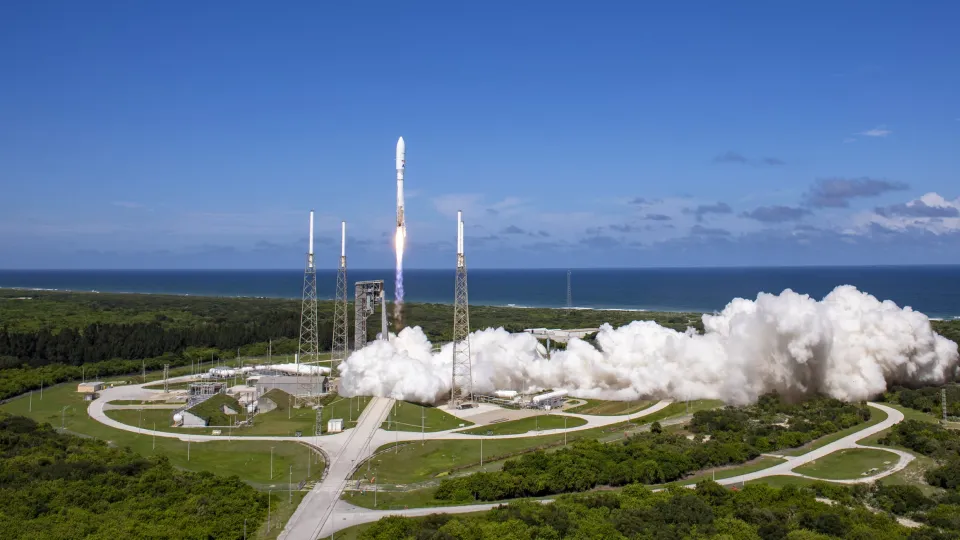Amazon's Project Kuiper looms closer

In this newsletter:
- Amazon deal with NBN Co suggests satellite network will launch within a year.
- N4L reports managed network progress.
- ComCom published fibre information disclosure draft.
- Tū Ātea adds board members.
Australia’s NBN Co to offer Amazon satellite broadband next year
Australia’s NBN Co plans to wholesale Amazon satellite broadband from the middle of 2026. The state-owned broadband provider says it will use Project Kuiper satellites to deliver services to regional, rural, and remote areas of Australia.
Project Kuiper could be live elsewhere well before that date. A post on the About Amazon website says the company expects its first commercial customers to connect before the end of this year.
NBN Co already uses geostationary Sky Muster satellites to service around 75,000 remote users. These satellites are expected to stop working early next decade, so a replacement was needed.
There was speculation that NBN Co would cut a deal with SpaceX to use its Starlink network, but it chose Amazon instead. Or as the Sydney Morning Herald put it: “NBN Co snubs Musk, inks satellite deal with Bezos' Amazon”. (The story is behind a paywall.)
Faster, lower latency
A press release on the NBN Co website says Amazon’s Project Kuiper satellites will offer faster broadband with lower latency than the existing service.
Amazon plans a constellation of 3,200 satellites. A launch last week took the total satellites in orbit up to 78. The company has a busy launch schedule with at least 80 more rocket launches this year.
It’s not clear how many satellites will be in orbit by the time the NBN Co service begins. When Starlink first offered commercial services, it only had around 700 satellites in orbit. Amazon should have more than that by the end of the year.
New Zealand in Project Kuiper plans
While there is nothing official about the company’s New Zealand plans, Amazon has a country manager, Joe Lathan, for Australia and New Zealand overseeing its Project Kuiper activities.
Last year, Amazon got permission to build a satellite ground station in New Zealand. It also acquired transmission licences.
To date, there have been no official reports of discussions between Amazon and NZ telecoms companies, although Download Weekly understands some talks have taken place.
Likewise, there is no information yet about the cost of an Amazon satellite service or the home equipment needed to communicate with the satellites.
Fierce competition with Starlink
Amazon’s deal with NBN Co is significant, but around 300,000 Australians already have satellite broadband accounts with Starlink. Point Topic reports that Australia is SpaceX’s fourth largest market.
The deal is not exclusive. Amazon will be able to sell directly to Australian customers.
Although New Zealand is a smaller market than Australia, a greater proportion of NZ rural people rely on satellite broadband than in any other nation. With most of the low-hanging fruit now picked, Amazon may struggle to dislodge Starlink unless it has something significant to offer in addition to connectivity or if it can compete on price.
Although Amazon has home users in its sights, the company has worked to integrate its satellite network with its network of AWS cloud data centres. This gives it an enterprise offering that can also be used by government departments and emergency services.
N4L managed network upgrades one-third completed

Network for Learning (N4L) says around a third of schools now have next-generation internet infrastructure. The project aims to deliver faster, safer, and more secure digital learning networks. It also means schools can use N4L as a virtual ISP.
The upgrade will see schools replace firewalls and switch to a new internet connection. The project is due to complete before the middle of 2026.
N4L CEO Larrie Moore says: "All schools, big or small, urban or rural, will be able to have access to enterprise-grade internet and cybersecurity, ensuring high-quality, fit-for-purpose digital services that best support modern teaching and learning. This hard mahi is allowing schools to concentrate on what matters most: teaching and learning.”
ComCom publishes draft fibre information disclosure review
The Commerce Commission has published a draft framework paper for its fibre information disclosure review. The main change is that the regulator wants to include a new disclosure requirement for the report on broadband quality.
While this could mean more paperwork for the fibre companies, it mainly covers information that is already collected each month. They would need to complete a publicly disclosed report on fibre quality. The thinking behind this is that it would speed up comparisons of quality between the regulated providers.
There is a recognition that the 100 Mbps up, 20 Mbps down benchmark bitstream service required since the regime was first introduced is now out of date. In future, 300/100 Mbps will be the reference service.
Another change is a switch from using internally generated fault reports to customer-generated fault reports for future monitoring of downtime.
New Zealand’s fibre information disclosure regime applies to Chorus and the three local fibre companies: Northpower, Enable, and Tuatahi.
Tū Ātea adds board members
George Reedy, Callum Kātene and Sheree Ryan have been appointed to the Tū Ātea board of directors by the Māori Spectrum Working Group. They join Robin Hapi, Haami Piripi, Elle Archer and Mike Jenkins.
Reedy was previously the chief executive of Te Rūnanganui o Ngāti Porou. Kātene is the founder of Ātea Systems Ltd, a specialist telecoms software development company. Ryan works as a CFO and was the first Māori appointed to the External Reporting Board (XRB).
Tū Ātea is the Māori spectrum and telecoms company behind New Zealand’s first private 5G network. It also works to build better communications networks in underserved regions.
In other news...
- The National Emergency Management Agency is moving—Interest.
- What is happening to the Emergency services mobile radio network? — Reseller News.
- A clever new use for old pay phones — NPR.
- Cert is gone – Who picks up the phone now? — ITP Techblog
End of transmission: New Zealand is a leading space nation
Auckland University Physics professor Richard Easther notes New Zealand is number three in the worldwide league table for orbital launches behind the US and China.
That’s an achievement. Yet, as Easter points out, on the per capita basis that we love to use, New Zealand has more orbital launches than anyone else.
We can take this further. Last year’s Commerce Commission Telecommunications Monitoring report found New Zealand had 57,000 Starlink accounts. The number will be higher today.
That’s about one percent of the population. Or 10,000 accounts per million population. In comparison, the US has 2,900 accounts per million. Canada has 500 per million. Australia has around 7,500.
Which means we don’t only hold the crown for the highest per capita number of rocket launches, we’re the highest per capita satellite broadband user.
Five years ago: $50 million for shovel-ready networks
Infrastructure minister Shane Jones and communications minister Kris Faafoi set aside $50 million for projects to push modern networks further into regional areas.
The TCF issued a report showing the success of telecoms networks during the early stages of the pandemic while warning the companies were not making enough of a return on their investments. Meanwhile, the UFB network signed up its millionth account.
Are you enjoying the Download Weekly? Feel free to pass this email on to your colleagues.
Have your say. If you’re a subscriber, you can comment on any newsletter or story on the website. Just scroll to the bottom of the page. Reader emails are also welcome.
Member discussion